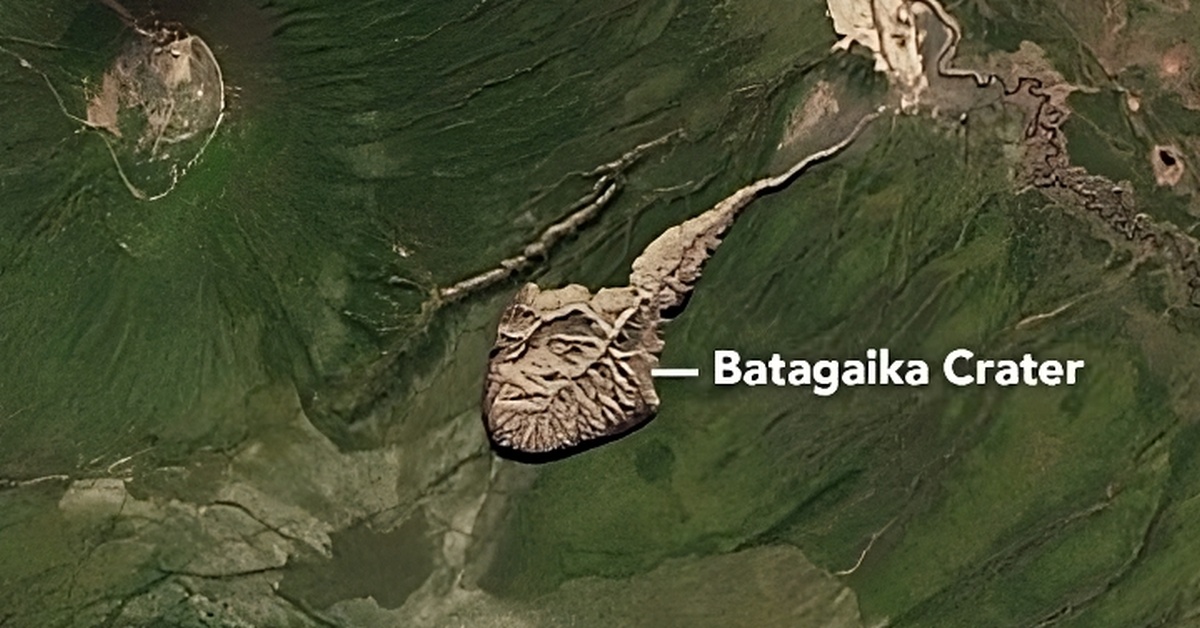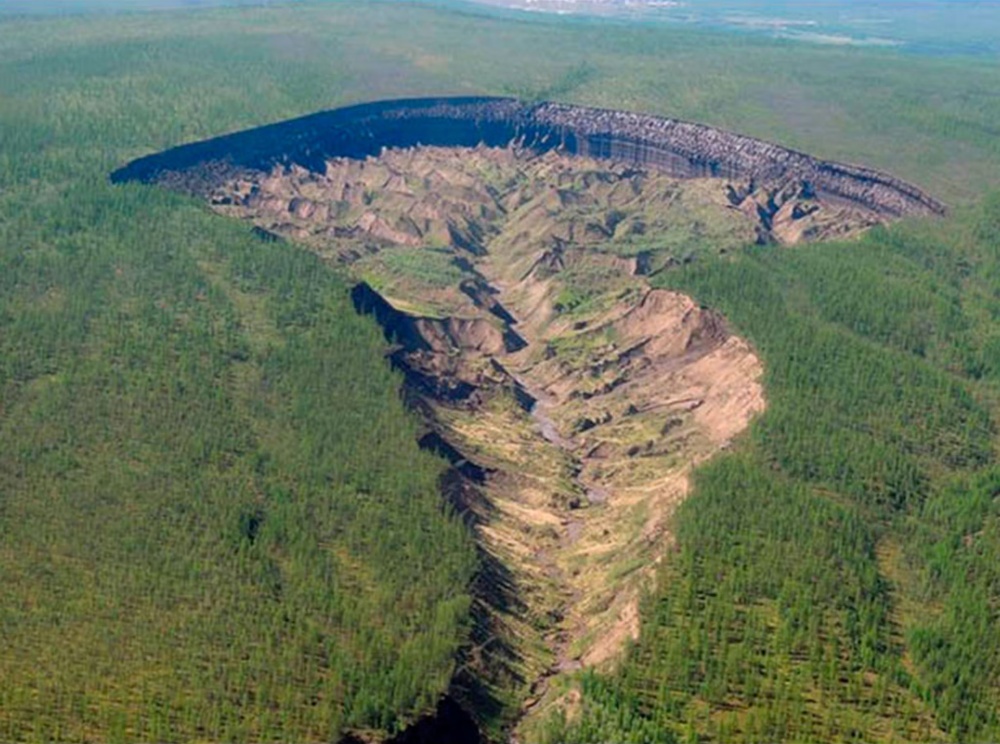The Batagaika megaslump provides a glimpse into Siberia’s ancient past and uncertain future.
 The Batagaika crater is the largest megaslump on earth. Image credit: NASA
The Batagaika crater is the largest megaslump on earth. Image credit: NASA
The Batagaika megaslump is a massive crater in the Siberian taiga, in the Republic of Sakha (Yakutia) in Russia. It is also known as the “gateway to hell” or the “scar on the planet” because of its enormous size and eerie appearance. The crater is about one kilometer long and 100 meters deep, and it is growing rapidly due to climate change and human activity.
The crater was formed by a process called thermokarst, which occurs when permafrost (permanently frozen ground) thaws and collapses, creating a depression in the landscape. The Batagaika megaslump started to form in the 1960s, after a nearby forest was cleared for road construction, exposing the permafrost to direct sunlight and warmer temperatures. Since then, the crater has been expanding by up to 10 meters per year, as more permafrost melts and erodes away.
 Batagaika crater evolution 1999-2013. Image credit: NASA
Batagaika crater evolution 1999-2013. Image credit: NASA
The Batagaika crater is not only a striking example of the effects of global warming on the Arctic, but also a unique window into the region’s geological and biological history. The exposed layers of ice and soil along the crater’s walls contain up to 200,000 years of climate records and ancient fossils. Researchers have found remains of extinct animals such as Pleistocene horses, steppe bison, cave lions, woolly rhinos, cave bears and wolves (or dogs?), as well as evidence of past vegetation such as spruce and pine forests. The oldest permafrost layer in the crater is estimated to be about 650,000 years old, making it the oldest known permafrost in Eurasia.
 The Batagaika megaslump exposed extinct animals such as Pleistocene horses, steppe bison, cave lions, and wolves, as well as evidence of past vegetation. Source
The Batagaika megaslump exposed extinct animals such as Pleistocene horses, steppe bison, cave lions, and wolves, as well as evidence of past vegetation. Source
The Batagaika megaslump is also a potential source of greenhouse gases, such as carbon dioxide and methane, that are trapped in the permafrost and released into the atmosphere when it thaws. This could create a positive feedback loop, where more warming leads to more thawing, which leads to more emissions, which leads to more warming. Scientists are monitoring the crater’s gas fluxes and microbial activity to better understand its impact on the global carbon cycle.
According to a recent report by Reuters, explorers ventured into the Batagaika mega slump and returned with awe-inspiring footage of their journey, capturing the view of the crater from the inside.
The Batagaika megaslump is one of many permafrost craters that have appeared across Siberia in recent years, but it is by far the largest and most impressive. It is a natural laboratory for studying the past and present dynamics of the Arctic environment, as well as a warning sign of the future challenges posed by climate change.
Sources: 1, 2, 3, 4, 5





